The Best Lacrosse Gloves for More Comfortable Play and Better PerformanceThe Best Lacrosse Gloves for More Comfortable Play and Better Performance
Choosing Lacrosse Gloves in the Correct Size is Critical for Comfort and Performance
Having lacrosse gloves that properly fit your hands is one of the most important factors in maximizing comfort, flexibility, protection and overall on-field performance. The right fitting gloves allow you to securely grip your stick, swiftly catch and throw with precision, and avoid the glove sliding around or shifting during intense play.
Gloves that are too small restrict hand motion, cause your fingers to pinch together, limit your ability to flex your hands, and reduce stick control and ball handling. Oversized gloves are equally problematic, sliding around on your hand, interfering with cradling, catching and throwing mechanics. This forces you to overgrip the stick, tires your hands and forearms, and leaves you prone to losing control of the ball.
When trying on lacrosse gloves, focus on achieving a snug fit in the fingers and across the palm and back of the hand, without any pinching or restricted motion. The gloves should be form-fitting but not painfully tight. For the best dexterity, you want minimal excess material bunching up in the fingers. The wrist strap also needs to be secured to lock the glove in position.
Some brands size gloves numerically based on hand circumference at the knuckles in inches, while others use the more traditional small, medium, large sizing approach. Trying on different gloves is the best way to dial in the right fit, and consider going up or down a size if you fall between standard sizes. Getting properly fitted lacrosse gloves tailored to the unique size and shape of your hands will allow you to play your best game.
Thick Palm Padding in Lacrosse Gloves Shields Against Painful Stingers
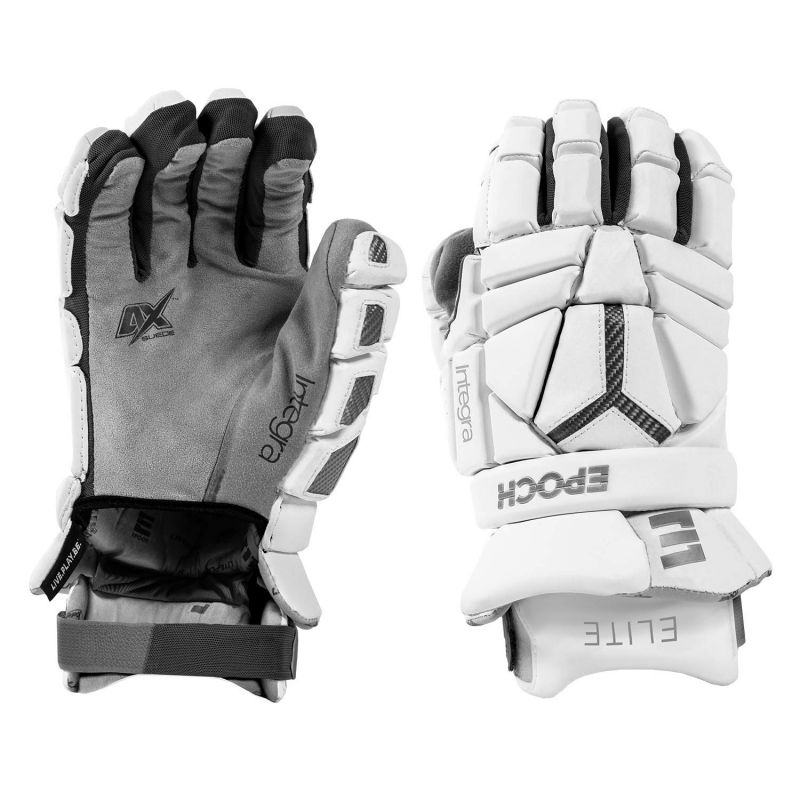
One of the prime functions of lacrosse gloves is absorbing the shock of constant impacts from snagging ground balls, scooping up passes, blocking shots, and stick checks from defenders. The palm padding acts as critical protection against painful and potentially dangerous stingers that can damage nerves and numb your hands.
Stingers occur when a hit compresses the nerve bundles between your fingers, shooting pain up into the wrist and forearm. While momentary, repeated stingers can cause inflammation, loss of feeling in the hands, and loss of control of the stick.
Look for lacrosse gloves with thick, multi-layered padding across the entire palm to mitigate stingers. At minimum, quality gloves have dual-density foam with an inner layer of soft, shock-absorbing foam and a firmer outer layer for stability and shape retention. Higher end gloves may incorporate extra padding components like Poron XRD, D3O, or visco-elastic polymer gels for increased impact absorption.
The plush padding not only reduces the initial force of impacts but also diffuses the energy over a wider surface area. Combined with flexible glove materials that allow the palm to momentarily compress on impact, this lessens the likelihood of painful nerve impingement.
Testing out various lacrosse gloves by catching hard, unsupported passes can give you a sense of the sting-reduction capabilities of the palm padding. Prioritize gloves with thick yet responsive padding across the lower palm and between the thumb and forefinger, as these areas handle the brunt of frontal stingers.
For added protection, some players opt to wear light half-finger padded shooting shirts underneath their gloves. But properly padded lacrosse gloves remain the first line of defense in shielding your hands and preventing painful nerve injuries during play.
Flexible Lacrosse Glove Materials Enable Full Range of Motion
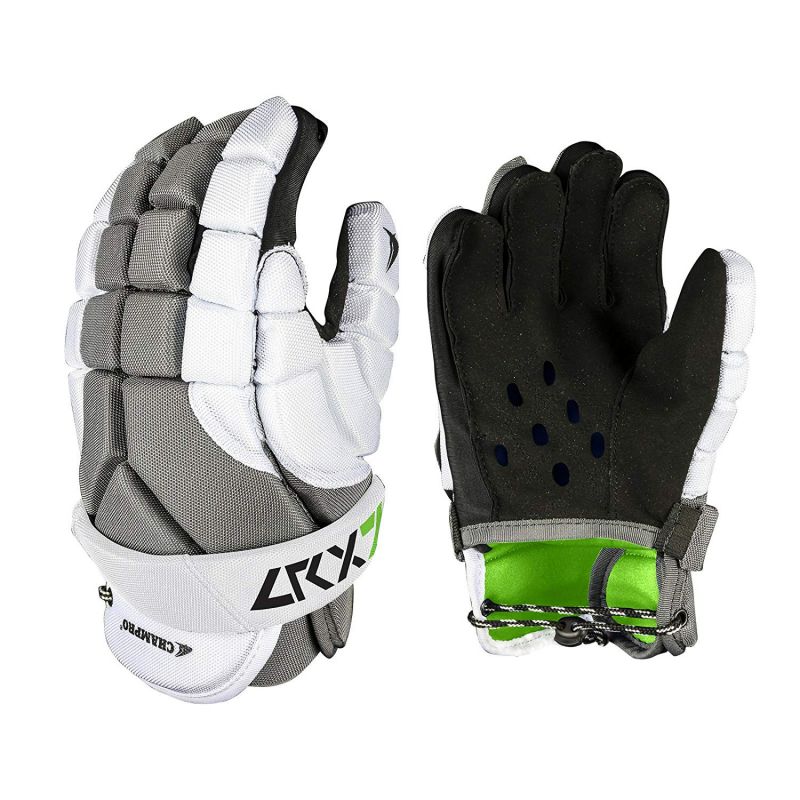
In addition to protection, lacrosse gloves must provide the flexibility and dexterity needed to handle the ball with precision. The optimal gloves feature construction from flexible, malleable materials that move naturally with your hands.
Synthetic leather Clarino palms offer better pliability and range of motion versus real leather. Four-way stretch mesh backs conform to hand movement for unrestricted mobility. Pre-curved fingers eliminate bunching when you grip the stick. These smart material choices prevent the rigid, cast-like feel of stiff gloves.
Mobility is especially crucial for stick handlers who frequently transition from cradling to passing and shooting on the run. Flexible gloves promote smooth handling, crisp catches on the fingertips, and the quick stick work vital for operating in traffic. Tighter glove materials can force you to grip the stick too hard, tiring forearm muscles and reducing control.
Test prospective lacrosse gloves by flexing fingers, making a fist, and mimicking catching and throwing motions. Focus on unhindered dexterity in the fingers and natural motion across the knuckles and back of the hand. There should be no pulling or resistance and no awkward straightening of the fingers when you cradle and handle the stick.
Also check that wrist straps do not cinched down so tightly that they impact flexibility. Straps should secure the glove in position when tightened firmly, not cut into skin or restrict wrist mobility.
While abrasion-resistant leathers protect against turf burn on checks and dives, opt for palms and outer fingers made with flexible synthetic leathers or treated with emollients. Seek out mesh or Lycra gussets between the fingers to encourage dexterity.
Choosing lacrosse gloves constructed from stretchable, malleable materials ensures you can move your hands freely and fluidly handle the ball through all facets of play.
Moisture-Wicking Liners Keep Hands Cool and Dry Inside Lacrosse Gloves
Glove sizing methods vary among brands:
- Some use numerical sizing based on hand circumference at the knuckles in inches
- Others employ the traditional small, medium, large sizing approach
Trying on different gloves is the best way to find the right fit. Consider going up or down a size if you fall between standard sizes. Properly fitted lacrosse gloves tailored to your unique hand size and shape will significantly enhance your game performance.
The Crucial Role of Palm Padding in Lacrosse Gloves
One of the primary functions of lacrosse gloves is absorbing the shock of constant impacts from various game actions, such as snagging ground balls, scooping up passes, blocking shots, and enduring stick checks from defenders. The palm padding serves as critical protection against painful and potentially dangerous stingers that can damage nerves and numb hands.
Understanding Stingers and Their Impact
Stingers occur when a hit compresses the nerve bundles between fingers, shooting pain up into the wrist and forearm. While momentary, repeated stingers can lead to:

- Inflammation
- Loss of feeling in the hands
- Reduced control of the stick
To mitigate stingers, look for lacrosse gloves with thick, multi-layered padding across the entire palm. Quality gloves typically feature:
- Dual-density foam with an inner layer of soft, shock-absorbing foam and a firmer outer layer for stability and shape retention
- Higher-end gloves may incorporate extra padding components like Poron XRD, D3O, or visco-elastic polymer gels for increased impact absorption
The plush padding not only reduces the initial force of impacts but also diffuses the energy over a wider surface area. Combined with flexible glove materials that allow the palm to momentarily compress on impact, this lessens the likelihood of painful nerve impingement.
Testing Sting-Reduction Capabilities
To assess the sting-reduction capabilities of lacrosse gloves, try catching hard, unsupported passes. Prioritize gloves with thick yet responsive padding across the lower palm and between the thumb and forefinger, as these areas handle the brunt of frontal stingers.
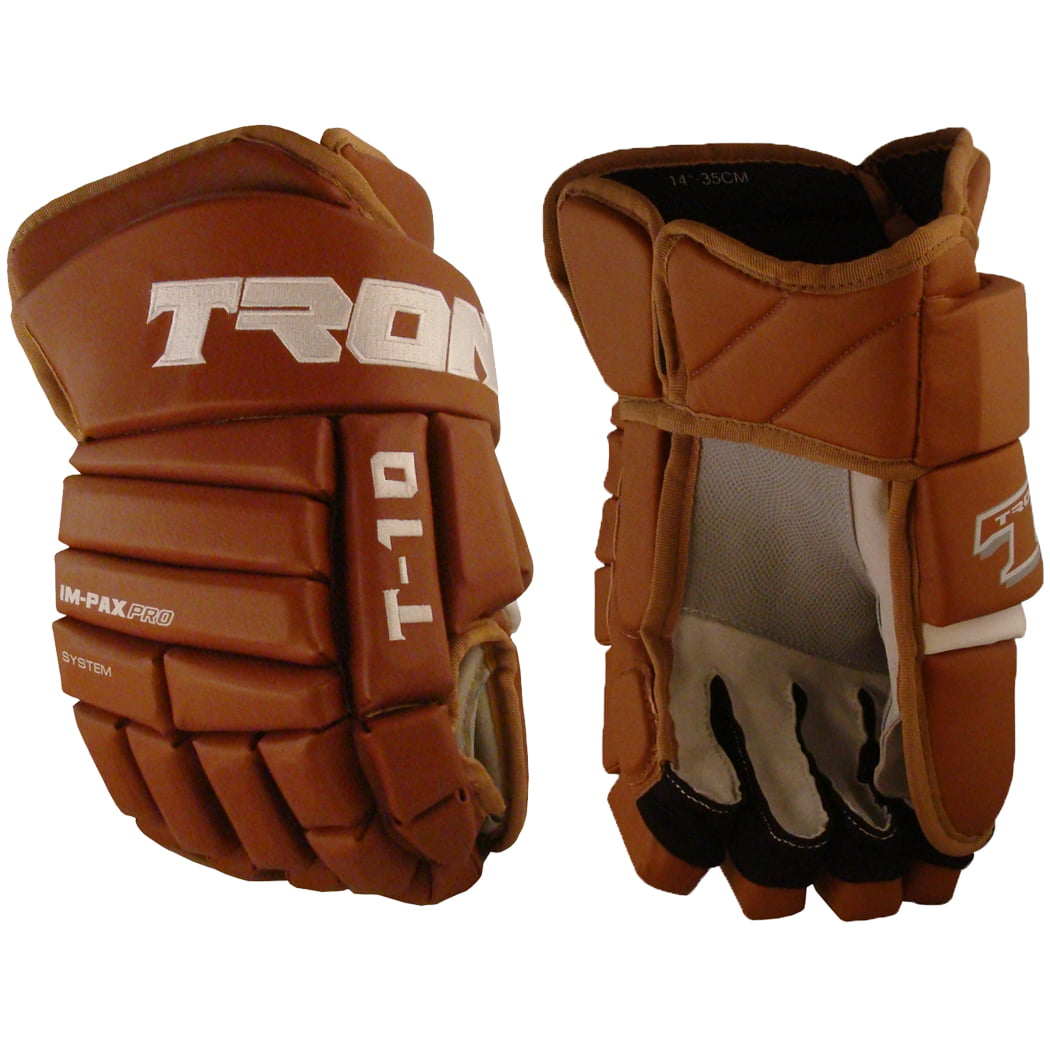
For added protection, some players opt to wear light half-finger padded shooting shirts underneath their gloves. However, properly padded lacrosse gloves remain the first line of defense in shielding hands and preventing painful nerve injuries during play.
The Significance of Flexibility in Lacrosse Glove Materials
While protection is crucial, lacrosse gloves must also provide the flexibility and dexterity needed to handle the ball with precision. Optimal gloves feature construction from flexible, malleable materials that move naturally with the player’s hands.
Key Features of Flexible Lacrosse Gloves
- Synthetic leather Clarino palms offer better pliability and range of motion compared to real leather
- Four-way stretch mesh backs conform to hand movement for unrestricted mobility
- Pre-curved fingers eliminate bunching when gripping the stick
These smart material choices prevent the rigid, cast-like feel of stiff gloves, enhancing overall performance on the field.
The Impact of Glove Flexibility on Stick Handling
Mobility is especially crucial for stick handlers who frequently transition from cradling to passing and shooting on the run. Flexible gloves promote:
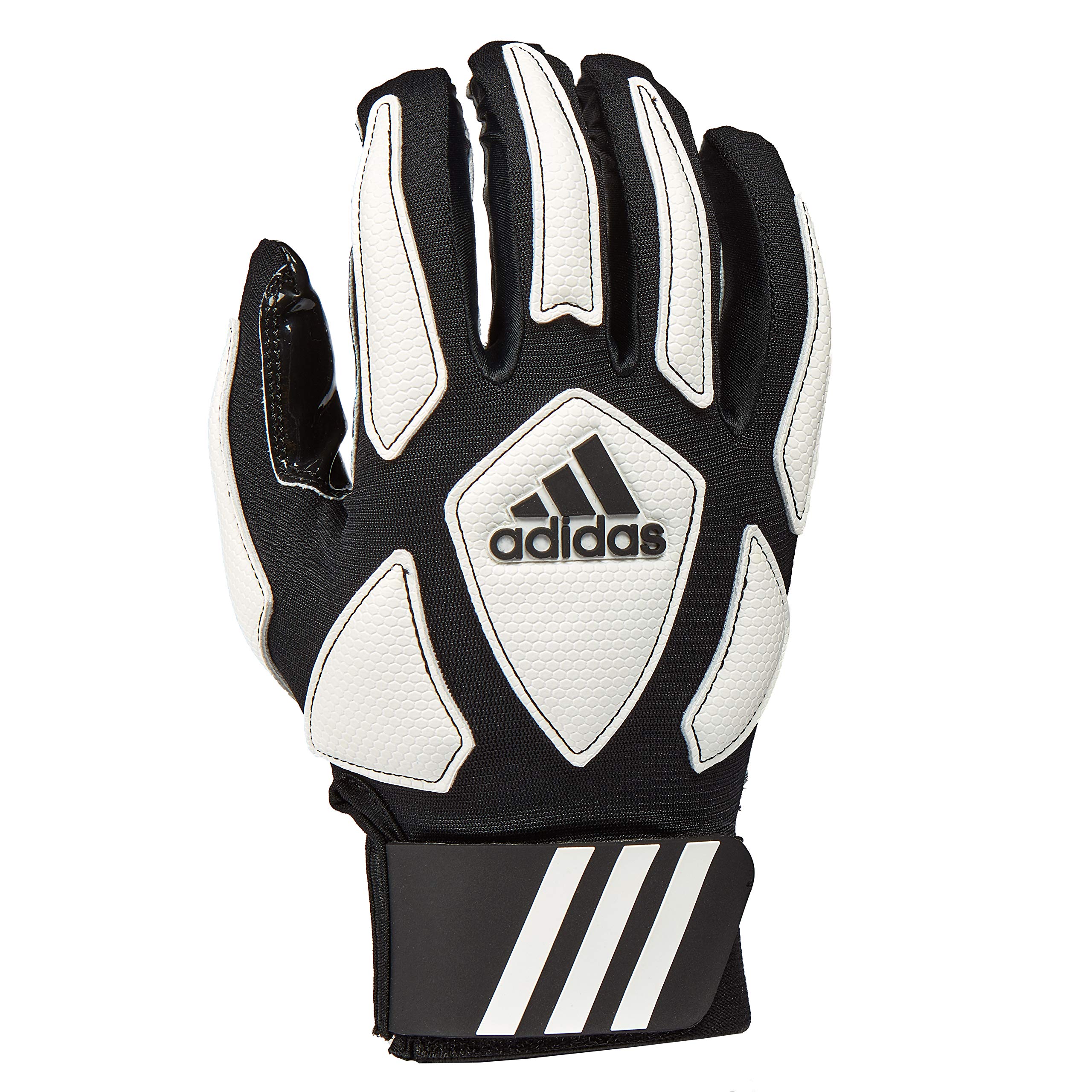
- Smooth handling
- Crisp catches on the fingertips
- Quick stick work vital for operating in traffic
Conversely, tighter glove materials can force players to grip the stick too hard, leading to tired forearm muscles and reduced control.
How to Test Lacrosse Glove Flexibility
When trying on prospective lacrosse gloves, perform the following tests:
- Flex fingers
- Make a fist
- Mimic catching and throwing motions
Focus on unhindered dexterity in the fingers and natural motion across the knuckles and back of the hand. There should be no pulling or resistance and no awkward straightening of the fingers when relaxed.
Advanced Materials in Modern Lacrosse Gloves
The evolution of lacrosse glove technology has led to the incorporation of advanced materials that significantly enhance player comfort and performance. These innovative components contribute to improved protection, breathability, and overall glove durability.
Cutting-Edge Padding Technologies
Modern lacrosse gloves often feature state-of-the-art padding materials that offer superior impact absorption and comfort:
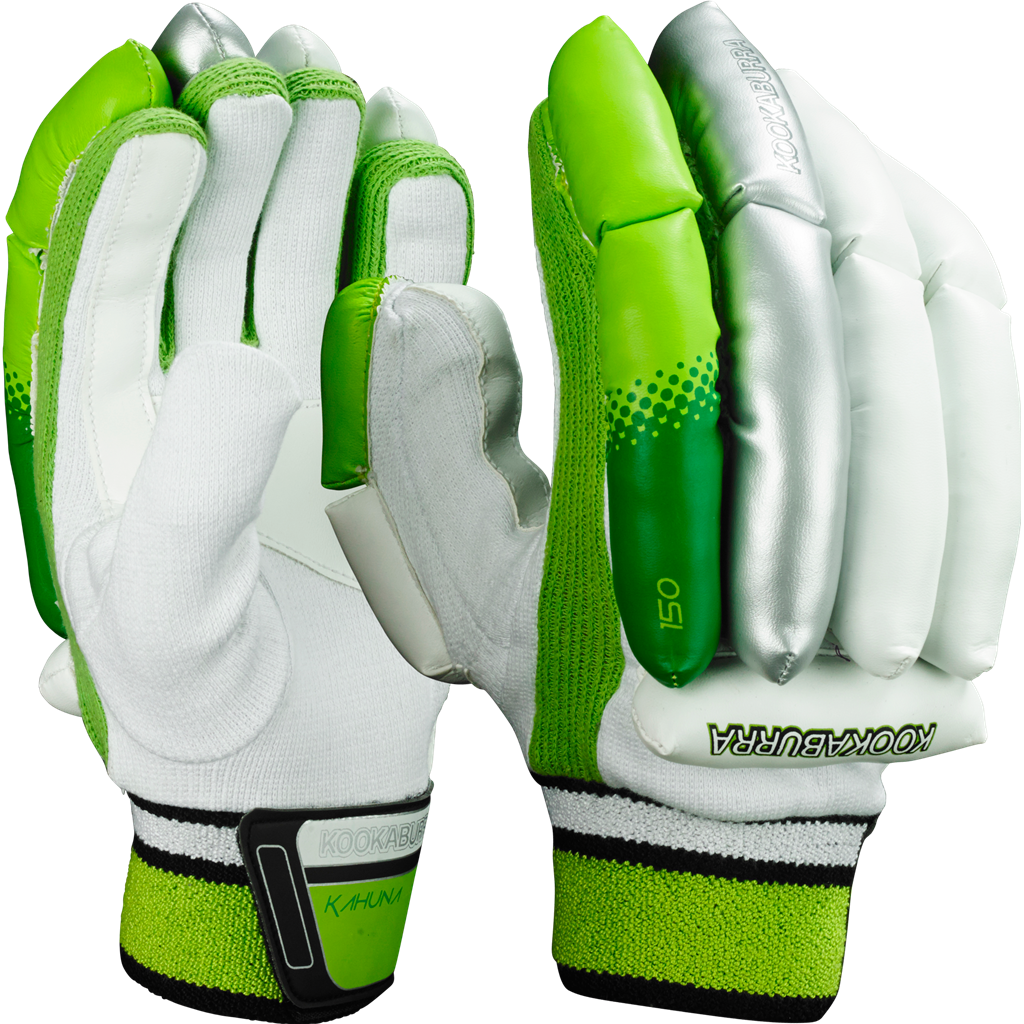
- Poron XRD: A lightweight, flexible foam that stiffens upon impact, providing excellent shock absorption
- D3O: A “smart” material that remains soft and pliable during normal use but instantly hardens when subjected to impact
- Visco-elastic polymer gels: Offer superior cushioning and pressure distribution
These advanced padding technologies not only enhance protection but also contribute to a more responsive feel, allowing players to maintain optimal control and sensitivity.
Moisture-Wicking and Breathable Fabrics
To combat sweat and maintain comfort during intense play, many high-end lacrosse gloves incorporate moisture-wicking and breathable materials:
- 37.5 Technology: A fabric treatment that helps regulate body temperature and humidity within the glove
- Climacool: An Adidas-developed material that provides ventilation and moisture management
- Dri-FIT: Nike’s moisture-wicking fabric that helps keep hands dry and comfortable
These innovative fabrics work to keep players’ hands dry, reducing the risk of blisters and improving overall grip and control.

Customization Options in Lacrosse Gloves
As the sport of lacrosse continues to grow, manufacturers are offering more customization options to cater to individual player preferences and team needs. These personalization features allow players to fine-tune their gear for optimal performance and style.
Adjustable Components
Many modern lacrosse gloves come with adjustable features that allow players to achieve a more personalized fit:
- Removable palm pads: Enable players to adjust the level of padding based on their position or playing style
- Interchangeable cuffs: Allow for customization of wrist protection and mobility
- Adjustable thumb pieces: Provide flexibility in thumb positioning for improved grip and control
Aesthetic Customization
Beyond functional adjustments, many manufacturers offer aesthetic customization options:
- Team color schemes: Gloves can be ordered in specific color combinations to match team uniforms
- Player name and number: Some brands allow for personalization with player names and numbers embroidered or printed on the gloves
- Custom graphics: High-end options may include the ability to add custom graphics or logos to the gloves
These customization options not only enhance team unity but also allow players to express their individuality on the field.
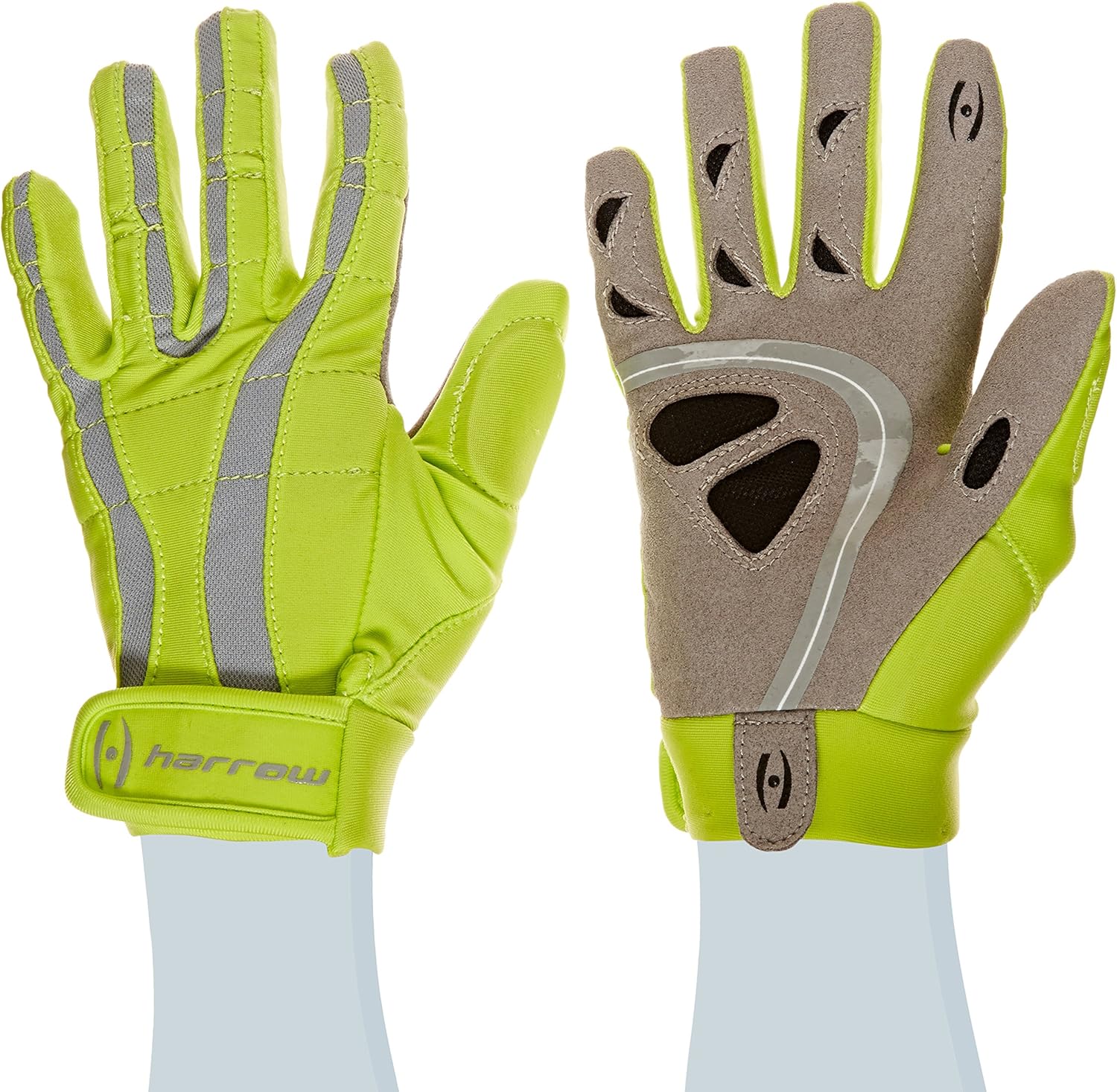
Maintenance and Care of Lacrosse Gloves
Proper maintenance and care of lacrosse gloves are essential for ensuring their longevity, performance, and hygiene. Regular cleaning and appropriate storage can significantly extend the life of your gloves and maintain their protective qualities.
Cleaning Techniques
To keep lacrosse gloves in top condition, follow these cleaning guidelines:
- Remove excess dirt and debris with a soft brush or cloth
- Hand wash gloves in cool water with mild detergent
- Gently scrub problem areas, paying special attention to the palm and fingers
- Rinse thoroughly to remove all soap residue
- Air dry at room temperature, avoiding direct sunlight or heat sources
Avoid machine washing or drying, as this can damage the gloves’ protective padding and structural integrity.
Odor Control
To combat unpleasant odors that can develop in frequently used gloves:
- Use antibacterial sprays or wipes designed for sports equipment
- Place dryer sheets inside the gloves between uses to absorb odors
- Consider using glove dogs or other moisture-absorbing inserts to reduce bacteria growth
Storage Best Practices
Proper storage is crucial for maintaining the shape and function of lacrosse gloves:

- Store gloves in a cool, dry place away from direct sunlight
- Use a breathable gear bag to allow air circulation
- Avoid compressing or folding the gloves, which can damage the padding
- Consider using glove shapers or stuffing the gloves with newspaper to maintain their form
By following these maintenance and care tips, players can ensure their lacrosse gloves remain in optimal condition, providing consistent protection and performance throughout their lifespan.
The Evolution of Lacrosse Glove Design
The design of lacrosse gloves has undergone significant changes over the years, reflecting advancements in materials science, biomechanics, and player needs. Understanding this evolution provides insight into the features and technologies that define modern lacrosse gloves.
Early Lacrosse Gloves
In the early days of lacrosse, gloves were minimal and offered limited protection:
- Made primarily of leather with minimal padding
- Focused more on grip than protection
- Often resembled work gloves rather than specialized sports equipment
Advancements in Protection
As the sport became more competitive and physical, glove design evolved to prioritize player safety:
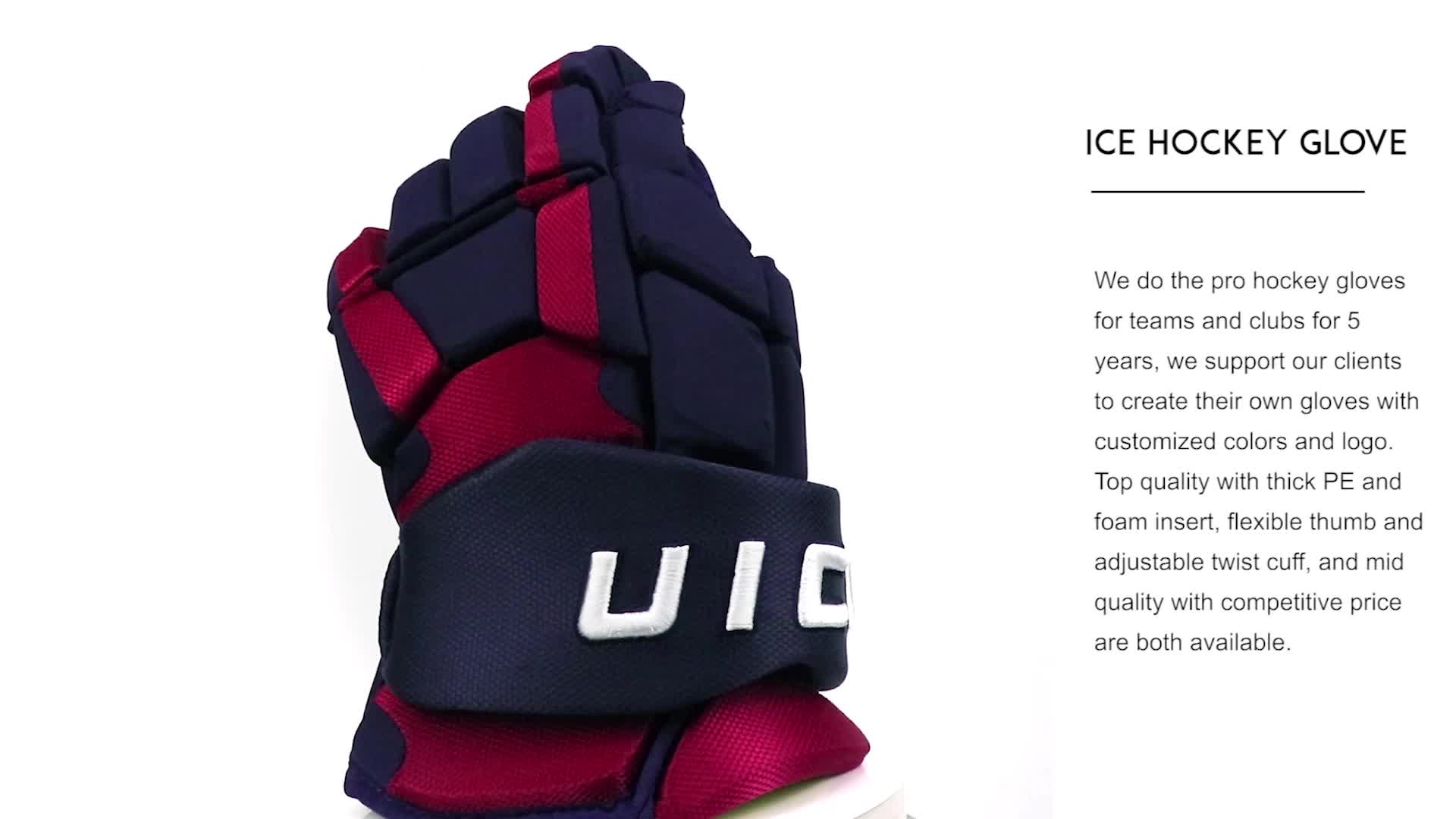
- Introduction of foam padding in key impact areas
- Development of rigid plastic inserts for enhanced protection
- Extended cuffs to protect the wrist and forearm
Focus on Flexibility and Performance
Recent decades have seen a shift towards designs that balance protection with mobility and control:
- Incorporation of flexible materials like synthetic leather and stretch fabrics
- Segmented padding to allow for natural hand movement
- Ergonomic designs based on hand anatomy and stick-handling mechanics
Modern Innovations
Today’s lacrosse gloves represent the cutting edge of sports equipment design:
- Integration of smart materials that adapt to impact and temperature
- Use of 3D printing technology for customized fit and protection
- Incorporation of antimicrobial treatments for improved hygiene
- Development of sustainable and eco-friendly materials
This ongoing evolution in lacrosse glove design continues to push the boundaries of player protection, comfort, and performance, ensuring that each new generation of players can compete at the highest level with confidence in their equipment.
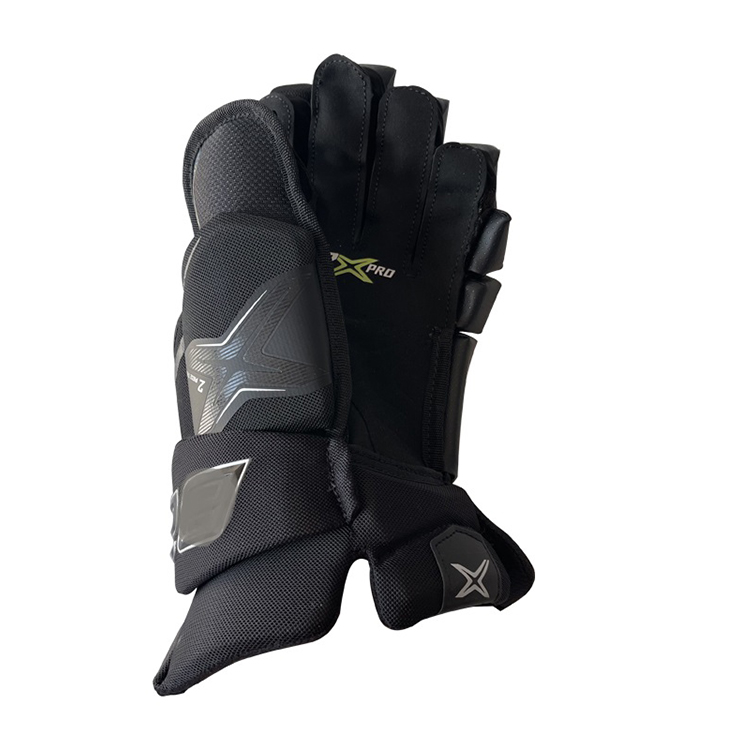
Selecting the Right Lacrosse Gloves for Your Position
Different positions in lacrosse require varying levels of protection, flexibility, and stick control. Understanding the specific needs of each position can help players select gloves that optimize their performance on the field.
Attackmen Gloves
Attackmen prioritize maneuverability and stick control:
- Lightweight design for quick hands
- Enhanced flexibility in the fingers and thumb
- Sufficient padding to protect against checks, but not so much as to hinder dexterity
Midfielders Gloves
Midfielders require a balance of protection and mobility:
- All-around protection for both offensive and defensive play
- Good ventilation for extended running
- Durable construction to withstand varied play styles
Defensemen Gloves
Defensemen need maximum protection without sacrificing control:
- Reinforced padding on the back of the hand and fingers
- Extended cuffs for additional wrist and forearm protection
- Durable materials to withstand frequent contact
Goalie Gloves
Goalies require specialized gloves designed for their unique role:
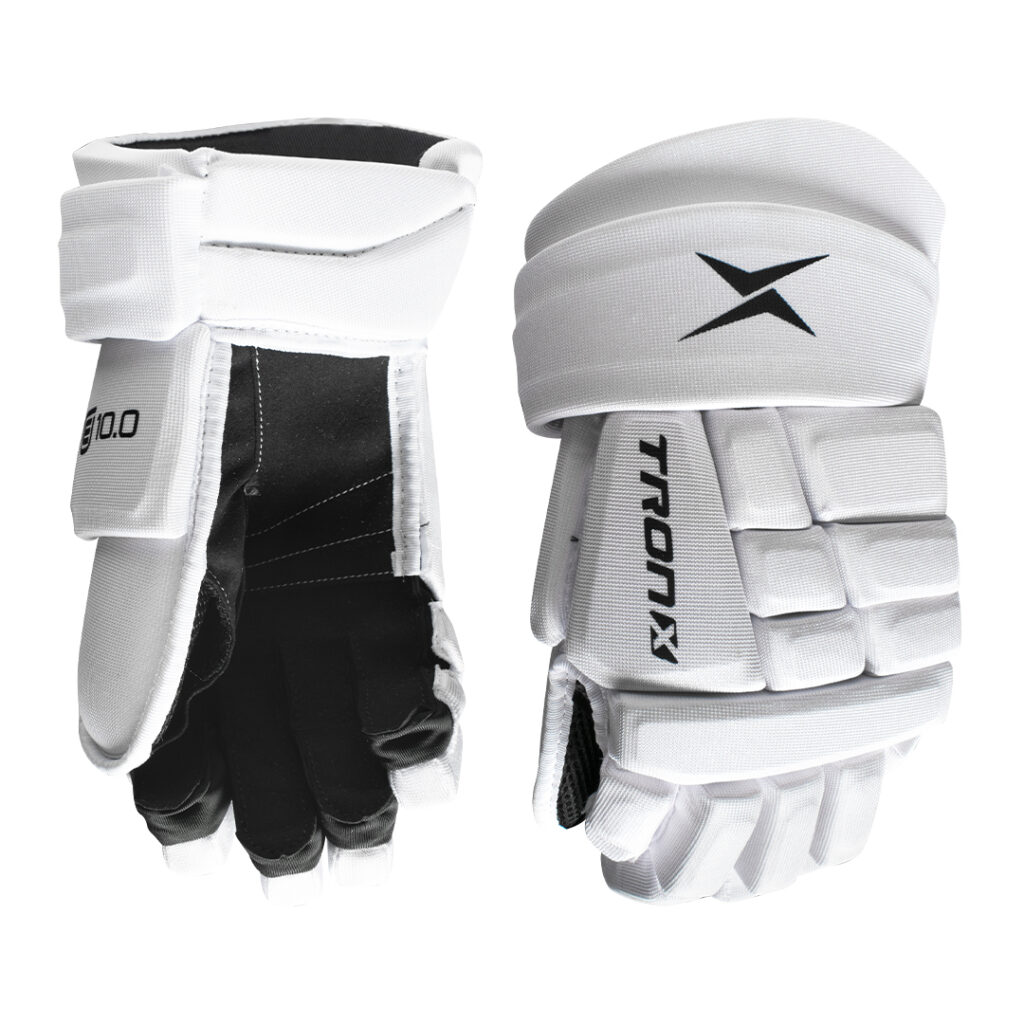
- Extra padding on the thumb and palm to absorb shot impact
- Wider cuff for increased wrist protection
- Enhanced grip features for secure stick control during clears
When selecting lacrosse gloves, consider your primary playing position and choose a pair that offers the right balance of protection, flexibility, and control for your specific on-field responsibilities. Many players find that trying gloves from different manufacturers helps them identify the best fit and feel for their individual needs and playing style.
Choosing Lacrosse Gloves in the Correct Size is Critical for Comfort and Performance
Having lacrosse gloves that properly fit your hands is one of the most important factors in maximizing comfort, flexibility, protection and overall on-field performance. The right fitting gloves allow you to securely grip your stick, swiftly catch and throw with precision, and avoid the glove sliding around or shifting during intense play.
Gloves that are too small restrict hand motion, cause your fingers to pinch together, limit your ability to flex your hands, and reduce stick control and ball handling. Oversized gloves are equally problematic, sliding around on your hand, interfering with cradling, catching and throwing mechanics. This forces you to overgrip the stick, tires your hands and forearms, and leaves you prone to losing control of the ball.
When trying on lacrosse gloves, focus on achieving a snug fit in the fingers and across the palm and back of the hand, without any pinching or restricted motion. The gloves should be form-fitting but not painfully tight. For the best dexterity, you want minimal excess material bunching up in the fingers. The wrist strap also needs to be secured to lock the glove in position.
Some brands size gloves numerically based on hand circumference at the knuckles in inches, while others use the more traditional small, medium, large sizing approach. Trying on different gloves is the best way to dial in the right fit, and consider going up or down a size if you fall between standard sizes. Getting properly fitted lacrosse gloves tailored to the unique size and shape of your hands will allow you to play your best game.
Thick Palm Padding in Lacrosse Gloves Shields Against Painful Stingers

One of the prime functions of lacrosse gloves is absorbing the shock of constant impacts from snagging ground balls, scooping up passes, blocking shots, and stick checks from defenders. The palm padding acts as critical protection against painful and potentially dangerous stingers that can damage nerves and numb your hands.
Stingers occur when a hit compresses the nerve bundles between your fingers, shooting pain up into the wrist and forearm. While momentary, repeated stingers can cause inflammation, loss of feeling in the hands, and loss of control of the stick.
Look for lacrosse gloves with thick, multi-layered padding across the entire palm to mitigate stingers. At minimum, quality gloves have dual-density foam with an inner layer of soft, shock-absorbing foam and a firmer outer layer for stability and shape retention. Higher end gloves may incorporate extra padding components like Poron XRD, D3O, or visco-elastic polymer gels for increased impact absorption.
The plush padding not only reduces the initial force of impacts but also diffuses the energy over a wider surface area. Combined with flexible glove materials that allow the palm to momentarily compress on impact, this lessens the likelihood of painful nerve impingement.
Testing out various lacrosse gloves by catching hard, unsupported passes can give you a sense of the sting-reduction capabilities of the palm padding. Prioritize gloves with thick yet responsive padding across the lower palm and between the thumb and forefinger, as these areas handle the brunt of frontal stingers.
For added protection, some players opt to wear light half-finger padded shooting shirts underneath their gloves. But properly padded lacrosse gloves remain the first line of defense in shielding your hands and preventing painful nerve injuries during play.
Flexible Lacrosse Glove Materials Enable Full Range of Motion

In addition to protection, lacrosse gloves must provide the flexibility and dexterity needed to handle the ball with precision. The optimal gloves feature construction from flexible, malleable materials that move naturally with your hands.
Synthetic leather Clarino palms offer better pliability and range of motion versus real leather. Four-way stretch mesh backs conform to hand movement for unrestricted mobility. Pre-curved fingers eliminate bunching when you grip the stick. These smart material choices prevent the rigid, cast-like feel of stiff gloves.
Mobility is especially crucial for stick handlers who frequently transition from cradling to passing and shooting on the run. Flexible gloves promote smooth handling, crisp catches on the fingertips, and the quick stick work vital for operating in traffic. Tighter glove materials can force you to grip the stick too hard, tiring forearm muscles and reducing control.
Test prospective lacrosse gloves by flexing fingers, making a fist, and mimicking catching and throwing motions. Focus on unhindered dexterity in the fingers and natural motion across the knuckles and back of the hand. There should be no pulling or resistance and no awkward straightening of the fingers when you cradle and handle the stick.
Also check that wrist straps do not cinched down so tightly that they impact flexibility. Straps should secure the glove in position when tightened firmly, not cut into skin or restrict wrist mobility.
While abrasion-resistant leathers protect against turf burn on checks and dives, opt for palms and outer fingers made with flexible synthetic leathers or treated with emollients. Seek out mesh or Lycra gussets between the fingers to encourage dexterity.
Choosing lacrosse gloves constructed from stretchable, malleable materials ensures you can move your hands freely and fluidly handle the ball through all facets of play.
Moisture-Wicking Liners Keep Hands Cool and Dry Inside Lacrosse Gloves
The intense athletic activity of lacrosse leads to profuse sweating, especially on hot, humid days. Sweaty hands inside stiff gloves are not only uncomfortable but can also cause slipping, chafing, and loss of stick control.
Look for lacrosse gloves lined with moisture-wicking materials that pull sweat off the skin and promote quick evaporation. Polyester microfiber, nylon mesh, and spandex blends make excellent glove liners, keeping the inside of your gloves light and dry regardless of the weather or pace of play.
Moisture-wicking liners are often antimicrobial treated to inhibit the growth of odor-causing bacteria from sweat. Breathable mesh gussets between the fingers also aid ventilation and cooling. This combination helps prevent your gloves from becoming hotbeds of stench after repeated intense use.
Some higher-end gloves feature inner liner pockets for removable protected padding or even cold packs to actively chill hands during breaks. Others incorporate battery-powered, rechargeable fans that push cooling air into the fingertips.
When gloves get sweat-soaked during play, be sure to remove and dry them out completely between games and practices. Allowing moisture to linger promotes bacterial growth and material breakdown. Rotate between multiple pairs of gloves to extend their lifespan.
While exterior glove materials take the brunt of abrasion from scooping, cradling and checking, wicking liners play the equally vital role of keeping your hands cool, dry and stench-free. Prioritizing this interior comfort will help you maintain a confident grip when the game is on the line.
Durable Lacrosse Glove Exteriors Withstand Impact and Abrasion
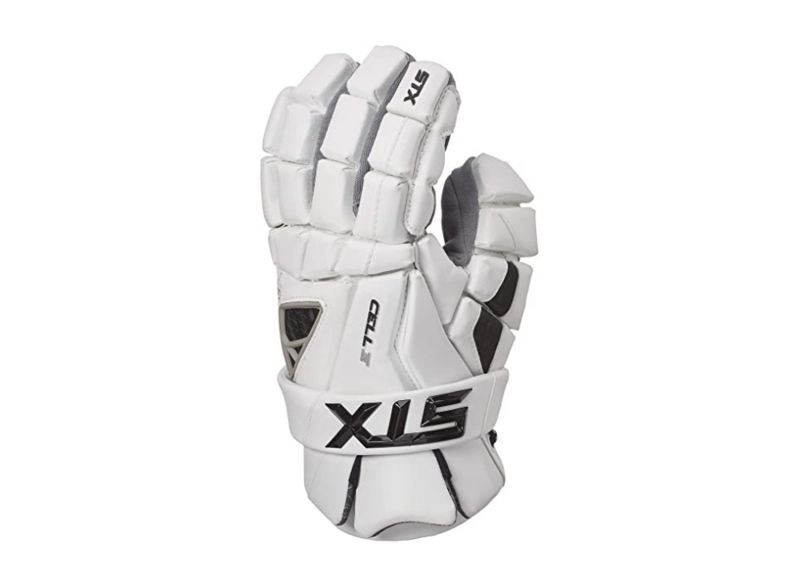
The exterior shell of lacrosse gloves takes a beating from the abrasive forces of scooping ground balls, blocking shots, and absorbing checks. Selecting gloves made from tough, durable materials provides extended protection against the rough and tumble nature of the sport.
Full-grain leather palms offer supreme abrasion resistance from all the scooping and slapping involved in generating fast breaks. Leather reinforcements across the fingers and back of hand help withstand frontal checks from aggressive defenders. Look for premium full-grain leather rather than lower-grade, split leathers prone to faster breakdown.
Synthetic leathers like durable Clarino offer a lighter, more flexible alternative to real leather for players who prioritize dexterity and range of motion. These materials stand up to abrasion nearly as well as leather. Some gloves layer synthetic leather reinforcements over padding for optimized abrasion resistance and impact protection.
Mesh glove backs allow maximum ventilation to hands for comfort during intense play. Nylon-backed neoprene and Lycra provide a cool, lightweight alternative that still permits great mobility and airflow. Spandex offers stretch for flexibility along with rugged durability from repeated motion and checking.
Focus your lacrosse glove search on construction from premium materials built to withstand the inevitable handfuls of turf and ricocheting lacrosse balls that will pound their exteriors. Bomber exterior shells reinforce padding and liners to extend a glove’s useful life through many hard-fought seasons of play.
Snug Lacrosse Glove Wrist Straps Keep Protection in Place
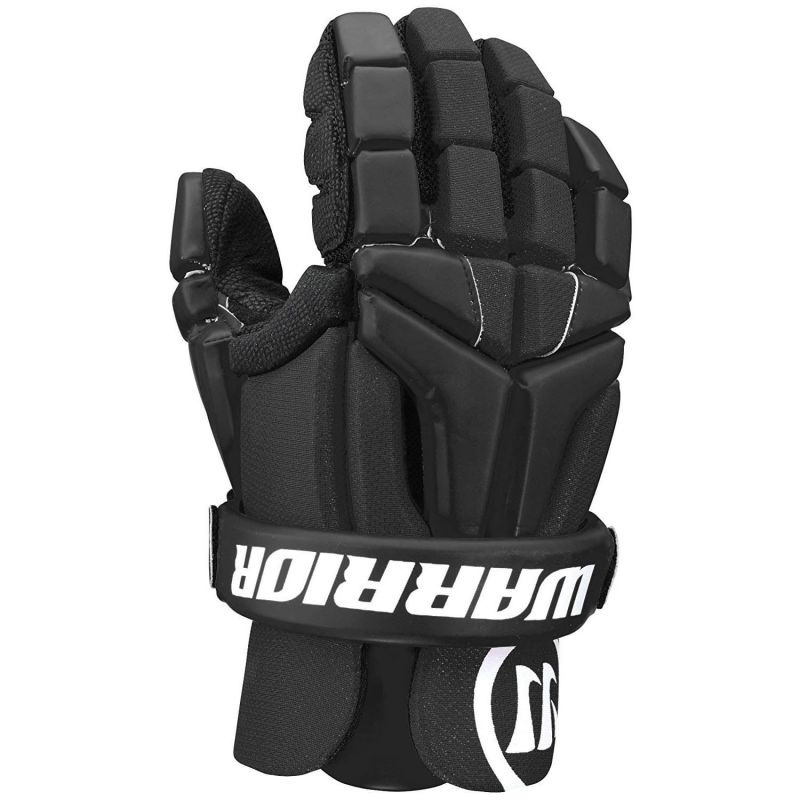
An often overlooked component in lacrosse gloves is the wrist strap. This adjustable fastening secures the glove tightly in position against the abrupt motions involved in passing, catching, cradling and checking.
Wrist straps take a lot of abuse from the forces transmitted through the stick. Tightly cinched straps prevent the gloves from shifting or sliding off the hands when aggressively slashing and poking at opponents’ sticks.
Look for wide, sturdy wrist straps constructed from durable woven nylon or neoprene and anchored by heavy-duty Velcro enclosures. The most protective straps incorporate padding or plastic guards on the inside to shield wrist bones from painful checks.
Test prospective gloves by violently shaking your hands and simulating checking movements. If the strap fails to keep the glove locked in place, it risks sliding into the path of the top hand and interfering with cradling and throwing mechanics.
The ideal wrist strap has dense, high quality Velcro that “grabs” firmly when mated together. This prevents unwanted loosening during play. Straps anchored more centrally under the wrist also maintain a more secure hold. Pay close attention to strap design, as inferior materials and craftsmanship lead to chronic slipping issues.
While strap tension should compress the glove snugly, ensure blood flow to the hand is not restricted and no numbness occurs. You want a tight hold without loss of feeling. Remember to re-check wrist strap tightness periodically after adjusting, as Velcro fasteners can creep loose over time.
Customizable Lacrosse Gloves With Removable Palm Pads
One way to tailor the fit and feel of your lacrosse gloves is choosing a model with removable palm padding. This allows you to insert or remove layers of padding in the palm area for your preferred thickness and responsiveness.
Youth players often benefit from removing palm padding to improve grip and stick feel as their hands are still developing strength and technique. As hand size increases, more padding can be added back in for protection as players advance to faster, harder competition.
For precision stick handlers and face-off specialists who prioritize maximum dexterity, eliminating one or two layers of palm padding provides a more tactile, bare-hand type grip of the stick.
Conversely, players looking to bolster protection can supplement factory installed palm padding with aftermarket options like grey sweatshirt material for extra dampening against painful stingers.
Being able to customize palm padding thickness according to your playing style, hand size and preference for stick feel versus protection makes these adjustable lacrosse gloves extremely versatile. It allows the same glove model to adapt and provide an ideal fit over multiple seasons as your hands grow.
Just be sure that any additional padding installed is secure and flush within its compartment, with no bunching, folds or uneven sections that can cause discomfort. Dialing in your lacrosse gloves by fine-tuning the palm padding is an excellent way to get the right fit and responsiveness tailored specifically to you.
Lightweight Lacrosse Gloves Improve Mobility and Stick Handling
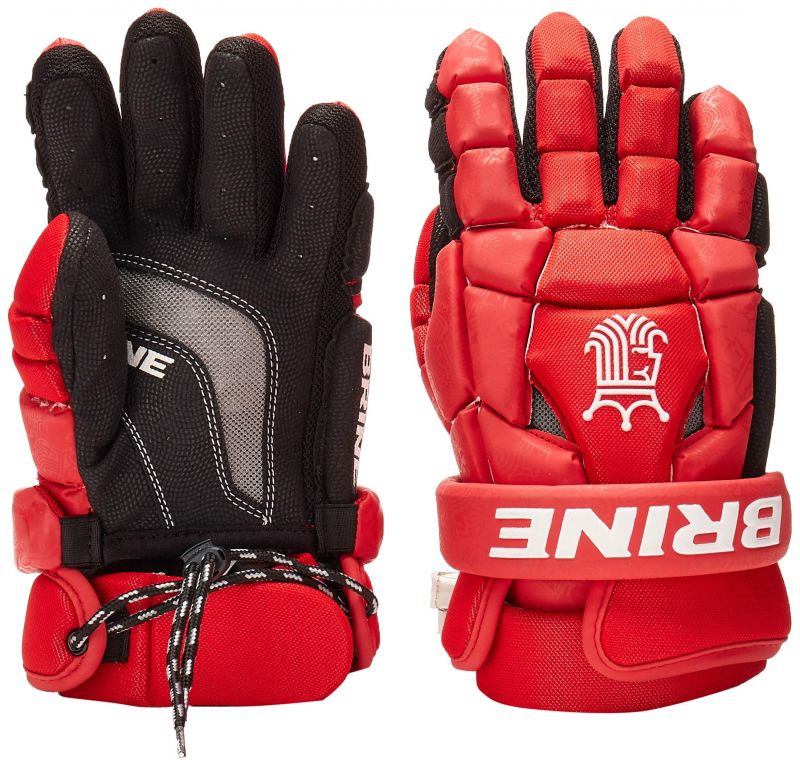
The weight of lacrosse gloves directly impacts how quickly and precisely you can move your hands to cradle, pass and catch. Excess weight from dense padding and bulky materials leads to fatigue, especially in your lead hand that constantly controls the stick.
New lightweight glove designs shave critical ounces without sacrificing protection. Four-way stretch mesh backs breathe better while weighing less than traditional nylon or neoprene. Perforated foam palm padding reduces mass. Synthetic leathers weigh less than heavyweight full-grain leather.
Weigh your prospective new gloves on a kitchen scale, aiming for 10 ounces or less in a typical men’s size. Then compare how the gloves feel wielding a stick during cradle and pass motions. Lightness promotes faster hand speed, quicker rolls and splits, and more controlled ball handling.
Focus extra attention on keeping lead hand gloves lightweight for easiest stick manipulation up and down the field. Polyester and spandex mesh provide excellent strength and ventilation at minimal weight.
Just ensure that manufacturers don’t sacrifice padding thickness and durability solely to chase lighter weight. Prioritize high-end foam and synthetic leather constructions that optimize both weight and protection. Quick-drying moisture wicking liners also help minimize water weight gain during games.
Choosing thoughtfully engineered lightweight lacrosse gloves enhances the speed, precision and endurance of your stick skills. Your hands will thank you over the course of a grueling tournament or playoff run.
Express Your Style With Cool Lacrosse Glove Colorways
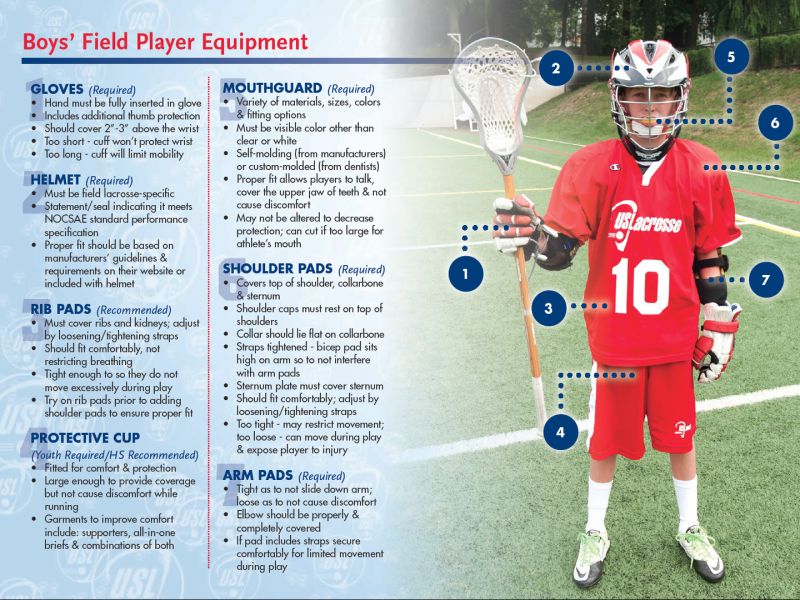
Beyond fit and function, the colors and graphics of lacrosse gloves let you showcase your personal style. While traditional white, black and brown gloves remain popular, manufacturers now offer eye-catching color palettes and unique prints to match your swag.
Customizable lace colors allow coordinating your gloves with your school colors or team uniforms. Two-tone color blocking, palm prints and other distinctive patterns help you stand out on the field. Limited edition pro model gloves feature iconic team logos and colorways.
Youth players tend to favor brash neon oranges, acid greens and vibrant purples for maximum visibility. Bold metallic colors like copper, gold and silver bring next level flash. Retro varsity color blocking evokes old school lacrosse glory.
For game days, choose gloves that complement your eye black, helmet decals, cleats and other gear for a totally cohesive look. Match the palms to your school colors and the backs to the jersey and shorts for team spirit points.
Off the field, loud gloves signal your lacrosse lifestyle wherever you go. Creating memorable colorways is also great for building your brand as a player should you have college recruitment or professional aspirations down the road.
While going for maximum flare, ensure bright color choices don’t hinder your on-field visibility to teammates. Contrasting palm colors aid sticking out from a distance when calling for passes.
Let your lacrosse gloves reflect your fast, flashy playing style. With so many choices available today, you can build a glove rotation to match any outfit or occasion.
Ventilation Holes in Lacrosse Gloves Keep Hands Cool
Lacrosse is an intensely athletic sport involving constant motion and exertion. Hard checks, sprints up and down the field, and quick stick handling work up a heavy sweat, especially on hot days. Proper ventilation is essential for dissipating heat buildup inside gloves.
Mesh backs with large, strategically placed ventilation holes encourage continuous airflow across the knuckles and back of the hand. Perforations along the fingers and palm also allow fresh air to flow through and evaporate sweat.
Synthetic leather palms with laser cut or molded ventilation ports offer enhanced breathability versus traditional full-grain leather constructions. Mesh gussets between the fingers serve as protected airflow channels as well.
Wicking liner materials draw moisture outward where ventilation holes offer an escape path. Without proper venting, sweat simply pools inside the gloves creating discomfort. Look for gloves with smart ventilation placement based on hand anatomy and the mechanics of cradling, catching and throwing.
During play, consciously relax your grip periodically to allow any trapped heat to escape. Seek shade during timeouts to help cool hands and gloves. Some players stash mini battery-powered hand fans in their lacrosse bag to actively chill gloves between sessions.
Proper ventilation keeps hands cool, dry and comfortable for optimal stick control and handling finesse. Well-designed lacrosse gloves balance abrasion protection with strategically placed airflow ports to prevent a hot, humid environment inside.
Mesh-backed gloves with perforated palms allow your hands to breathe easy when battling summer heat and humidity head-on.
Extended Lacrosse Glove Cuffs Shield Forearms
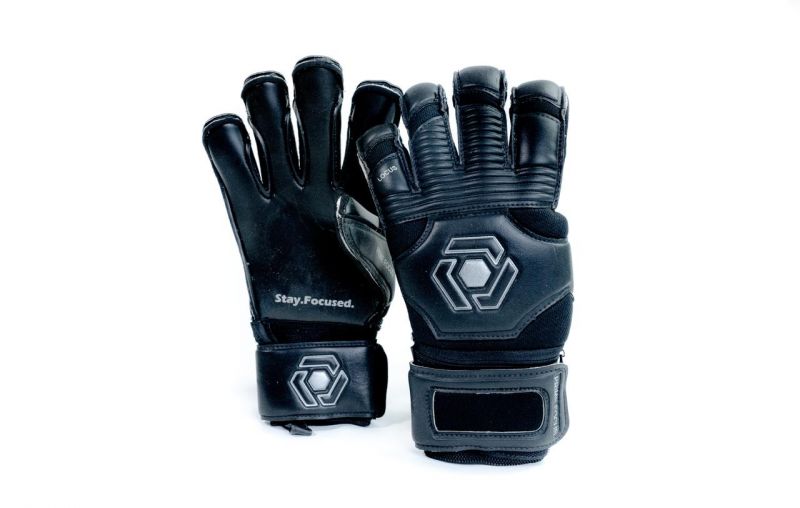
Lacrosse gloves safeguard more than just hands. Ample wrist and forearm protection is essential for fending off slashes and pokes from flailing opponent sticks.
Look for gloves with a cuff design extending 3-4 inches beyond the wrist to shield your lower forearms. Dense foam padding across this entire cuff absorbs sting. D30, Poron XRD or vinyl nitrile padding provides premium impact dispersion.
Cuffs fitted with protective plastic guards on the thumb side are ideal for deflecting bruising checks. High-end cuffs may even incorporate flexible plastic exoskeletons for 360 degrees of slash protection.
Longer cuffs allow you to loosen wrist straps for comfort while still keeping padding in the optimal position. The added coverage also facilitates sliding gloves up and down forearms between face-offs and on the sidelines without exposing skin.
Proper arm and elbow pad pairing works in conjunction with extended glove cuffs. There should be no gap between the bottom of your elbow pads and top of the glove cuff in the ready position.
For field players constantly jostling for inside position around the crease, maximum forearm armor is a must. Goalies also rely on overlapped glove and arm protection to fend off point blank rifle shots.
Look at cuff design as an indicator of overall glove protection philosophy. Prioritizing forearm shielding demonstrates commitment to keeping you safely covered through every unforgiving ground ball scrum and net-front confrontation.
Breaking In Lacrosse Gloves for Maximum Comfort
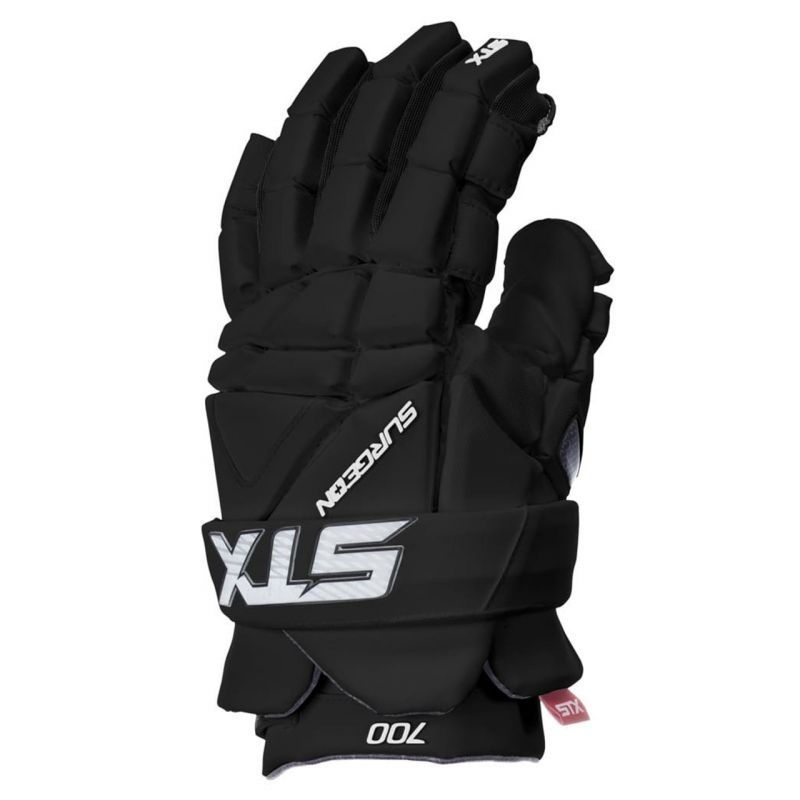
Brand new lacrosse gloves often feel stiff and restrictive until properly broken in. Taking the time to appropriately soften the materials prior to high intensity game action maximizes comfort, flexibility and responsiveness.
Gently working gloves by squeezing a ball, flexing fingers and rolling wrists accelerates the break-in process. Massaging leather palms with conditioner softens the material. Playing catch in the backyard also naturalely loosens up gloves.
Some players machine wash new gloves on gentle cycle then forcefully work the materials with hands during drying to promote pliability. Be cautious with excessive water exposure however, as many glove liners and padding materials retain moisture.
Storing gloves pressed under a mattress or weighted with heavy books when not in use compresses and extends the break-in period. Placing uncoated wooden sticks inside gloves and letting pressure work the shape retains proper pocketing.
Continue closely monitoring and working gloves during early practices until achieving your desired suppleness. While scrimmaging, periodically relax your grip to help the gloves conform to your hands’ natural shape and movements.
Pro actively breaking in lacrosse gloves reduces the awkward stiffness and discomfort that can disrupt your early season stick skills. With enhanced feel and dexterity, you’ll have full confidence handling and releasing the ball cleanly.
Replacing Worn-Out Lacrosse Gloves Restores Performance
The intense demands placed on lacrosse gloves during high-impact play leads to inevitable wear and breakdown over time. Trying to extend glove life too long by delaying replacement can negatively impact your protection and ball control.
Consistent cracking and flaking of leather palms signals loss of shock absorbing capability. Holes forming in the palms and fingers compromise abrasion resistance. Frayed stitching around seams hints at underlying structural issues.
Padding that feels packed down, misshapen or insufficiently dampens impacts indicates expiration. Warped wrist straps poorly secure gloves. Ubiquitous turf staining impedes grip and feel.
Set a usage timeframe expectation for lacrosse gloves of 1-2 years for youth players, 2-3 years for high school and 3-4 years for college. Goalie gloves sustain the most wear and often need annual replacing.
Rotate multiple pairs of gloves to increase longevity of each by avoiding overuse. Proper post-play cleaning and glove treatment extends useful life as well. Designate old gloves for practice use only.
While full palmed gloves offer the most durability, half-palm gloves properly rotated may last players with high ball contact several seasons. Finger paddings sees the most abrasion and requires frequent inspection.
Replacing lacrosse gloves before excess wear compromises safety and function ensures you always perform your best. Don’t wait until gloves are tattered rags before investing in new protection.
Regular Lacrosse Glove Cleaning Prevents Odors and Bacteria
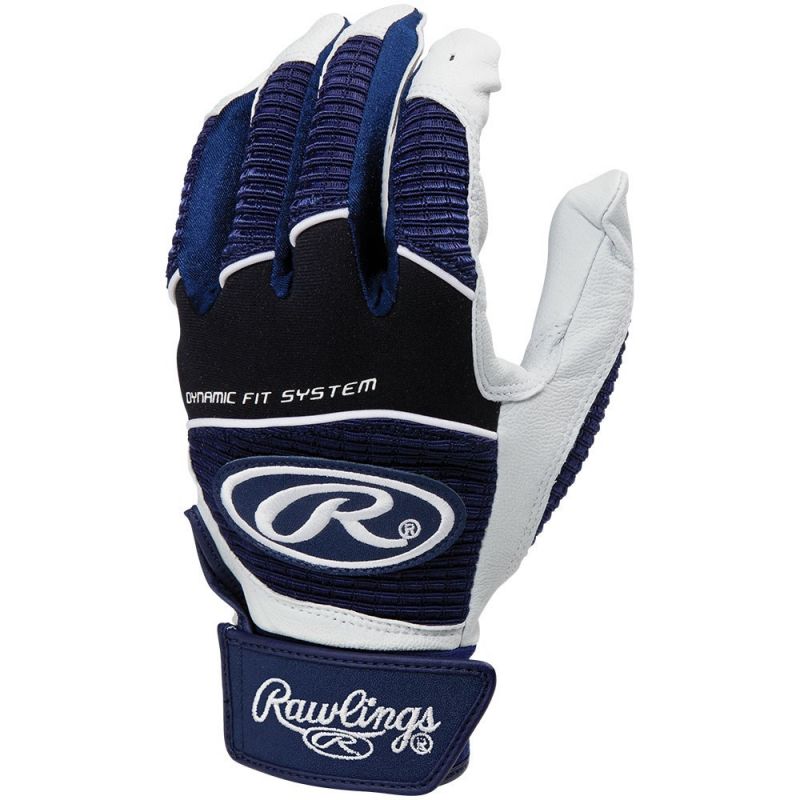
The warm, moist environment inside lacrosse gloves makes them prime breeding ground for odors, microbes and bacteria. Practicing consistent glove cleaning helps maintain freshness and eliminate unhealthy grime buildup.
Use a stiff bristle brush and mild detergent to vigorously scrub away caked-on dirt, mud and turf debris after each use. Clean all surfaces including the palms, fingers, backs and lining.
Allow the gloves to fully air dry before storage to prevent moisture retention that enables bacterial growth. Some gloves are machine washable but air drying is still required. Apply leather conditioner to restore suppleness.
Sanitize the glove’s interior by occasional spraying with rubbing alcohol or an antibacterial moist towelette. This kills microbes that cause stench. Refresh gloves mid-game by Miss-spraying hands with sanitizer.
Replace removable glove liners often and wash frequently by hand or machine. Rotate glove usage to allow thorough drying. Store gloves loosely rather than compressed.
Disinfect gloves prior to each season’s use by thorough cleaning and liners replacement. Softened leathers and padding may necessitate full glove replacement however.
Making glove cleaning after every use a habit preserves freshness and maintains hygienic gameplay. Keeping lacrosse gloves free of dirt, odor and germs should be part of your self-respecting equipment routine.
Smart Lacrosse Glove Shopping Maximizes Value
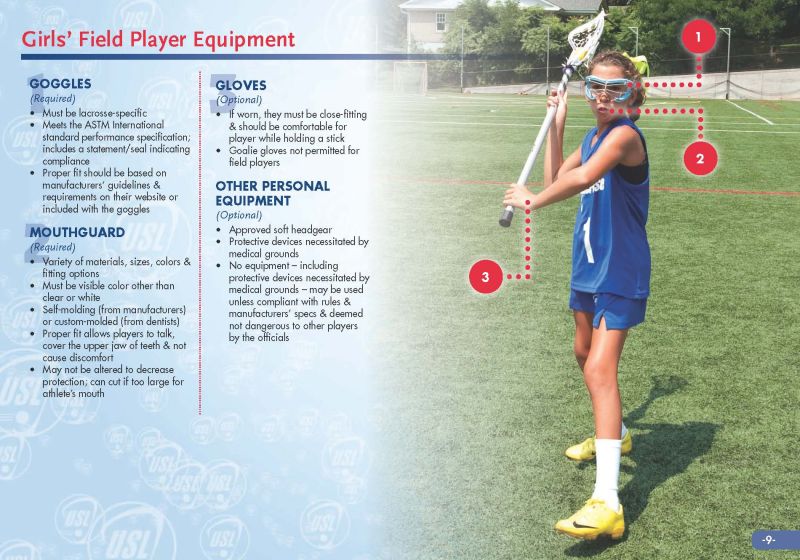
With rising equipment costs across all sports, getting the most protective, high performing lacrosse gloves for your budget requires smart shopping. Avoid overspending by focusing on value over brand hype and flashy features.
Set a glove budget based on your level of play, position and how quickly you burn through gear. Top youth gloves provide substantial protection starting around $40. High school players can invest $60-75 for durable four-year gloves.
College and pro players may require $100+ gloves but can still find sales. Don’t over-spend on unnecessary pro features like gel palm padding and vented moisture chambers unless playing at that level.
Prioritize fit, comfort and durability over labels. Major brands market themselves heavily but comparable protection exists across companies. Hand measurements matter more than logos.
Shop end of year sales, discontinued colorways and used equipment vendors to save big. Multi-year warranties provide assurance. Buy last year’s models still using the same technology and materials.
With some diligent research across brands, you can find excellent lacrosse gloves providing a perfect fit, serious protection and responsive feel within your budget. Don’t overpay simply for flashy branding and trendy gimmicks.